Chapter: Clinical Anesthesiology: Anesthetic Equipment & Monitors : The Anesthesia Machine
The Anesthesia Machine
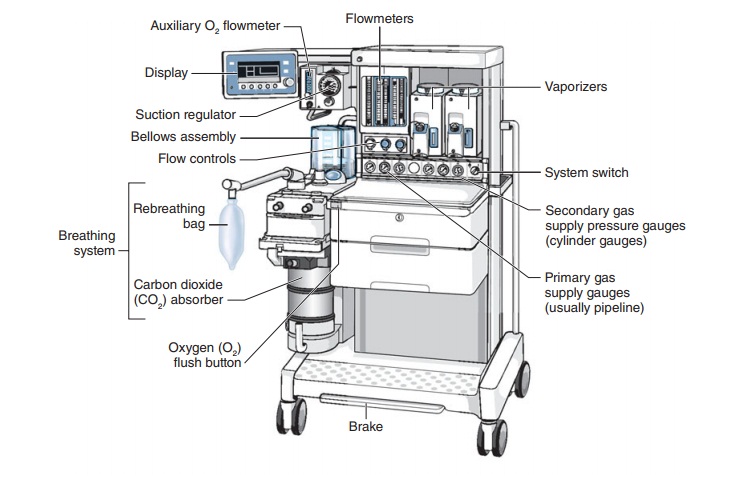
The Anesthesia Machine
No piece of equipment is more intimately
associated with the practice of anesthesiology than the anesthe-sia machine (Figure 4–1).
On the most basic level, the anesthesiologist uses the anesthesia machine to
con-trol the patient’s ventilation and oxygen delivery and to administer
inhalation anesthetics. Proper func-tioning of the machine is crucial for
patient safety. Modern anesthesia machines have become very sophisticated,
incorporating many built-in safety features and devices, monitors, and multiple
micro-processors that can integrate and monitor all compo-nents. Additional
monitors can be added externally and often still be fully integrated. Moreover,
modu-lar machine designs allow a wide variety of configu-rations and features
within the same product line. The term anesthesia
workstation is therefore often used for modern anesthesia machines. There
are two major manufacturers of anesthesia machines in the United States,
Datex-Ohmeda (GE Healthcare) and Dräger Medical. Other manufacturers (eg,
Mindray) produce anesthesia delivery systems. Anesthesia providers should
carefully review the operations manuals of the machines present in their
clinical practice.
Much progress has been made in reducing
the number of adverse outcomes arising from anesthetic gas delivery equipment,
through redesign of equipment and education. Misuse of anesthesia gas delivery
systems is three times more likelythan failure of the device to cause
equipment-related adverse outcomes. Equipment misuse is character-ized as
errors in preparation, maintenance, or deployment of a device. Preventable
anesthetic mis-haps are frequently traced to an operator’s lack of familiarity
with the equipment or a failure to check machine function, or both. These
mishaps account for only about 2% of cases in the American Society of
Anesthesiologists’ (ASA) Closed Claims Project database. The breathing circuit
was the most common single source of injury (39%); nearly all damaging events
were related to misconnects or disconnects. A misconnect was defined as a
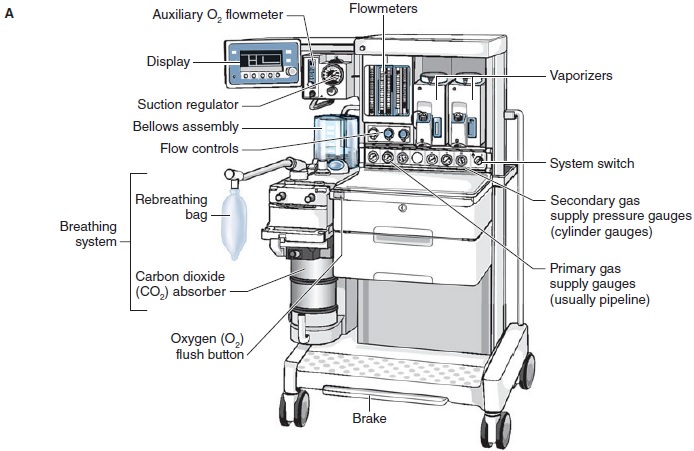
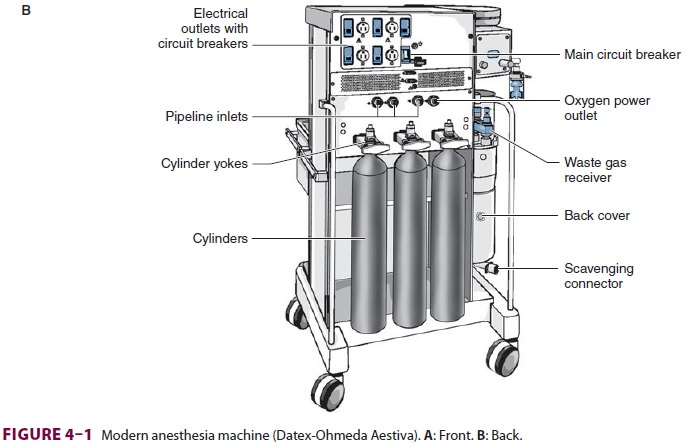
nonfunctional and unconventional
configuration of breathing circuit components or attachments. In decreasing
frequency, other causes involved vapor-izers (21%), ventilators (17%), and
oxygen supply (11%). Other more basic components of the anes-thesia machine
(eg, valves) were responsible in only 7% of cases. All malpractice claims in
the database that involved the anesthesia machine, oxygen supply tanks or
lines, or ventilators occurred before 1990; since then claims involving
breathing circuits and vaporizers have continued to occur.
The American National Standards
Institute and subsequently the ASTM International (formerly the American
Society for Testing and Materials, F1850–published standard specifications for
anesthesia machines and their components. Table 4–1 lists essential features of a modern
anesthesia work-station. Changes in equipment design have been directed at
minimizing the probability of breath-ing circuit misconnects and disconnects
and auto-mating machine checks. Because of the durability and functional
longevity of anesthesia machines, the ASA has developed guidelines for
determining anesthesia machine obsolescence (Table 4–2).
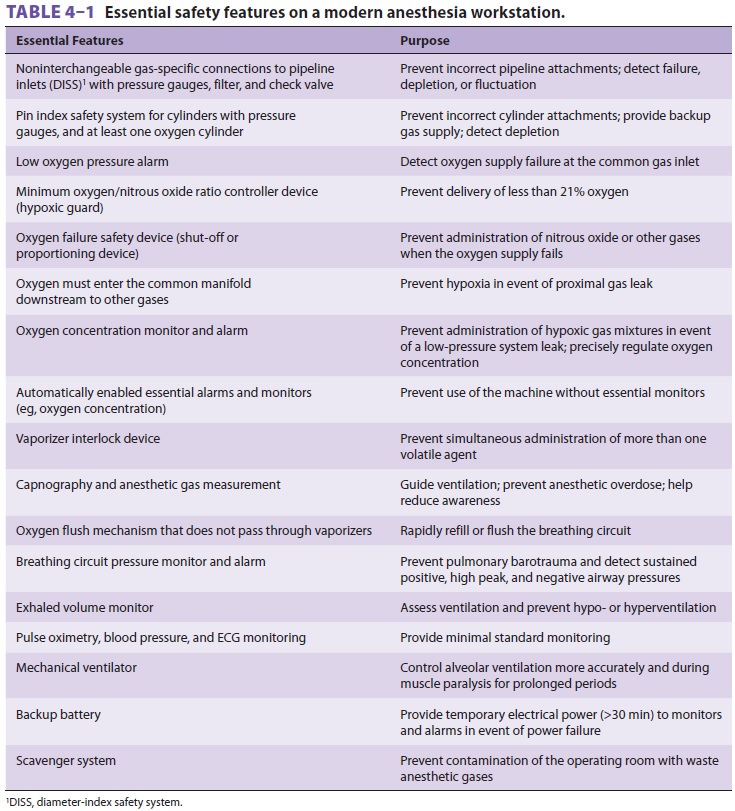

OVERVIEW
In its most basic form, the anesthesia
machine receives medical gases from a gas supply, controls the flow and reduces
the pressure of desired gases to a safe level, vaporizes volatile anesthetics
into the final gas mixture, and delivers the gases to a breathing circuit
connected to the patient’s airway (Figures 4–2 and 4–3). A mechanical ventilator
attaches to the breathing circuit but can be excluded with a switch during
spontaneous or manual (bag) ventilation. An auxiliary oxygen supply and suction
regulator are also usually built into the workstation. In addition to standard
safety features (Table 4–1) top-of-the-line anesthesia machines have additional
safety features, enhancements, and built-in com-puter processors that integrate
and monitor all com-ponents, perform automated machine checkouts,
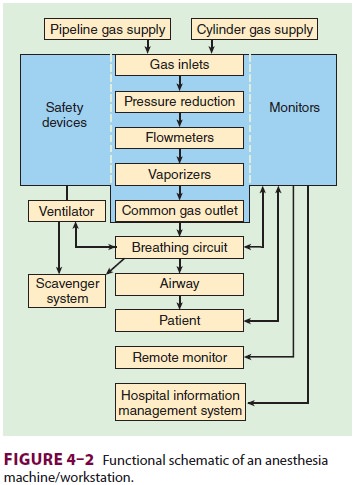
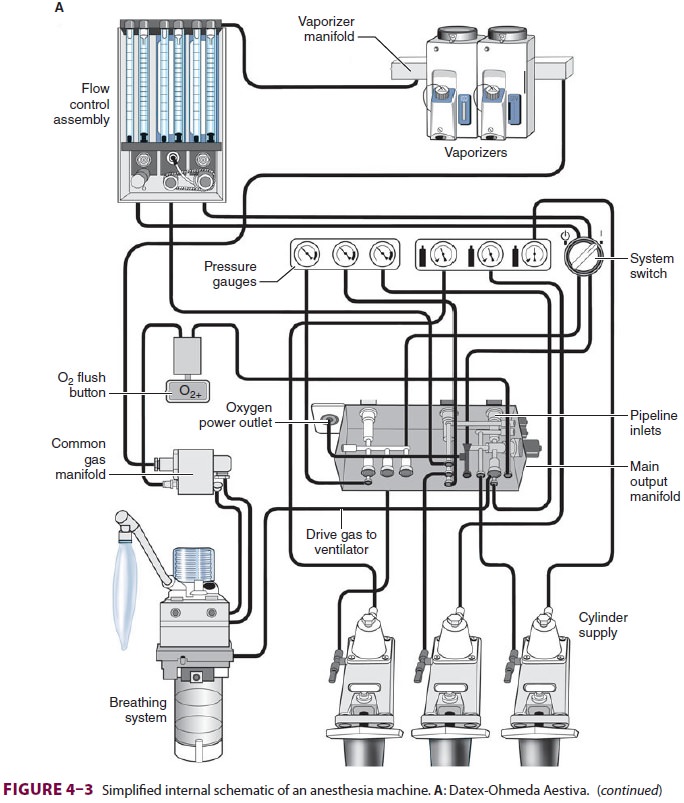
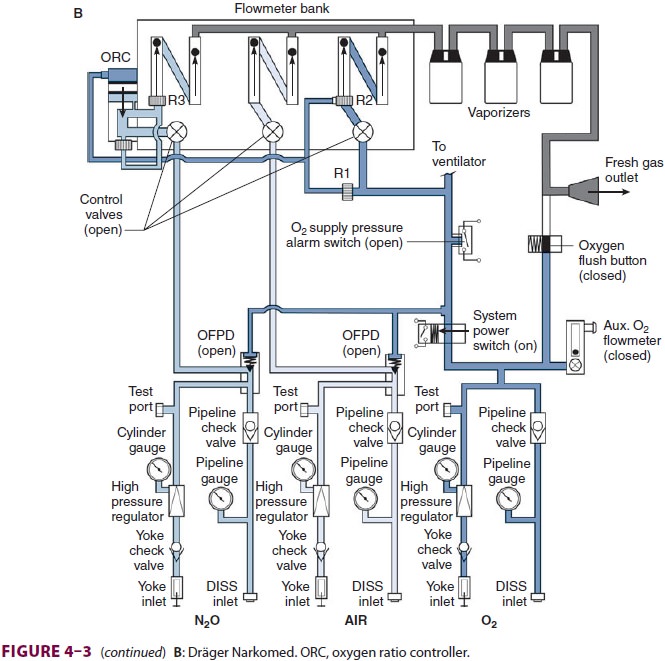
and provide options such as automated
record-keeping and networking external monitors and hospital information
systems (Figure
4–4). Some machines are designed specifically for mobility, magnetic
resonance imaging (MRI) compatibility or compactness.
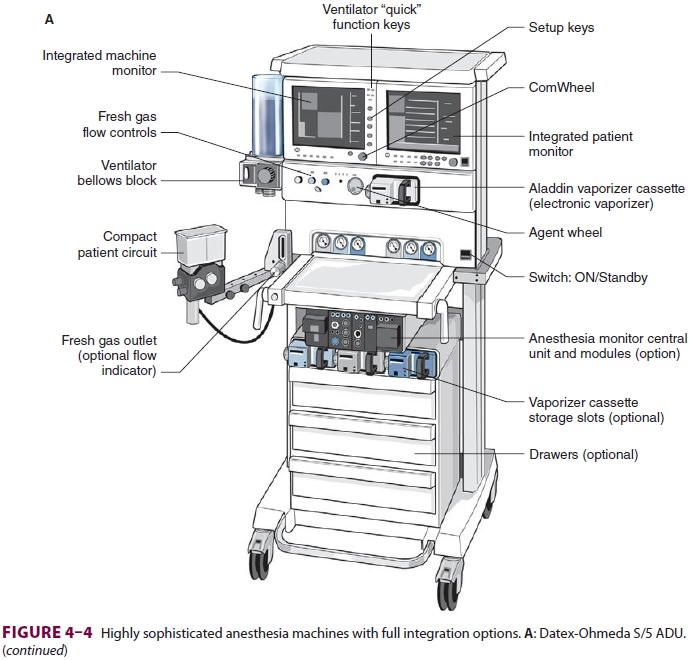
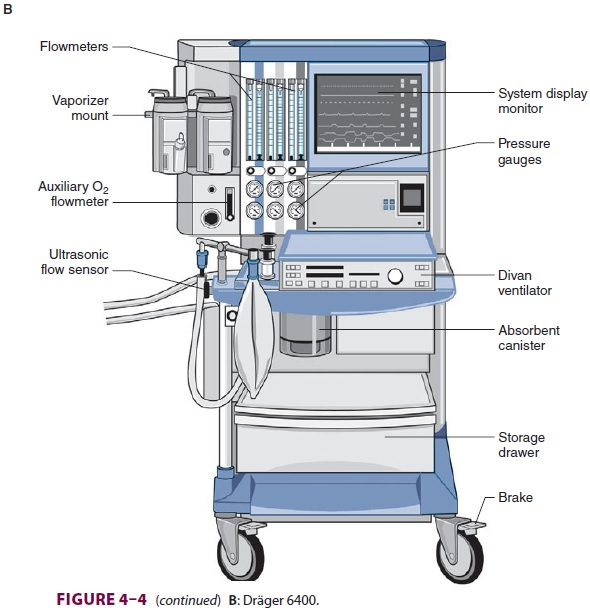
Related Topics